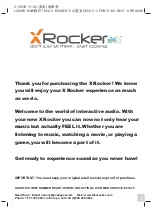
9
General description
Mounting
Typical application of our sensors
Our sensors detect media in their active zone by oscillating the transistor oscillator as the medium
approaches. The smaller the dielectric constant (Ɛr), the closer the medium must be approached. Our
IAS sensors (inductive proximity switches / sensors) detect metallic media, our KAS sensors (capacitive
proximity switches / sensors) detect all media. The effect is also possible through electrically non-conductive
materials: In the case of our KAS sensors through max. 4 mm thick walls, here the dielectric constant of
the medium to be detected should be approx. a factor of 5. The current change of the oscillator is output
as a binary signal via a switching amplifier.
Clear area
Mounting / detectable material
d1
≥ 3 x d1
e
Flush mountable
Damping material for IAS are all metals, for KAS all media.
Threaded sensors are supplied with 2 nuts. The following table should be consulted when considering
the maximum torque. For mounting in threaded blocks the maximum screw-in length has to be taken
into consideration (according to DIN 13). For sensors without thread the range of accessories provides
suitable mounting blocks.
Dimension "a"
≥
2,2 x Sn
Dimension "b"
≥
1,5 x Sn
Tightening torque
PTFE PEEK Brass Stainless steel
M8x1
-
4 Nm
-
4,5 Nm
M12x1
0,2 Nm 2 Nm 15 Nm
15 Nm
M18x1
0,5 Nm 3 Nm 28 Nm
40 Nm
M22x1,5 1,4 Nm 13 Nm 32 Nm
50 Nm
M30x1,5 2,5 Nm 7 Nm 82 Nm
150 Nm
M32x1,5 3 Nm 25 Nm 110 Nm
180 Nm
G1/2“
-
25 Nm
-
-
G 1"
2,5 Nm
-
110 Nm
110 Nm
The dimension “e” corresponds to the
thread-free area or
≥
25 mm.
a
b
Mounting / detectable material
Non-flush mountable
Installation of cables
Wiring of the sensors should be routed separately or screened from heavy conductor lines,
as in extreme cases inductive peak voltages can destroy the sensors despite the integrated
protective circuit. Screened cable or twisted lines are recommended, especially for longer cable
runs > 5 m.
Mounting / detectable material
EN










































